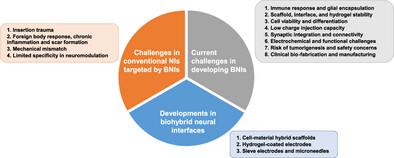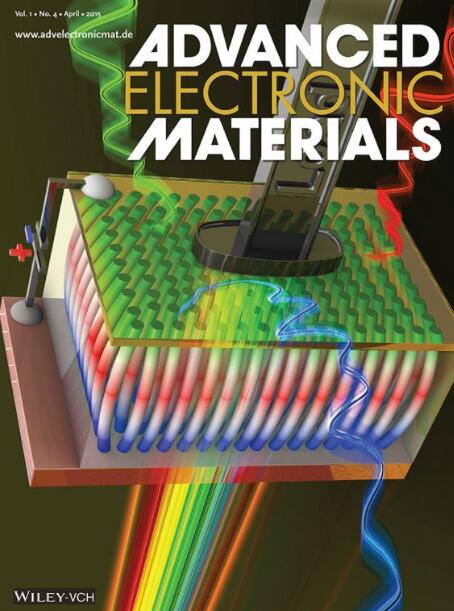生物杂化神经接口领域的现状与挑战——综述
IF 5.3
2区 材料科学
Q2 MATERIALS SCIENCE, MULTIDISCIPLINARY
引用次数: 0
摘要
生物混合神经接口(BNIs)将是未来推进神经修复和神经调节技术的关键,尽管它们尚未被广泛应用于日常实践。这篇综述旨在巩固最近的进展,确定持续的挑战,并检查生物混合神经接口的方法,以突出知识差距并为未来的研究提供信息。遵循系统评价和元分析扩展范围评价(PRISMA-ScR)框架的首选报告项目,Medline/Embase、IEEE Xplore、Scopus、Web of Science和Cochrane Library的电子文献检索,涵盖2000年以后的研究,主要集中在同行评议的英文文章。本次范围综述共纳入25篇文章,包括15篇主要研究、7篇综述文章和3篇相关报告。这些研究探索了活细胞、诱导多能干细胞(iPSCs)、神经营养因子、水凝胶和导电聚合物的整合,以增强神经功能和生物相容性。尽管取得了令人鼓舞的进展,但免疫反应、设备耐用性和信号保真度等挑战仍然是临床转化的关键障碍。尽管取得了进步,但该领域仍面临着需要进一步研究的挑战。未来的努力应该集中在改进生物活性涂层,推进生物混合设计,开发下一代神经记录系统,以提高长期集成和性能。本文章由计算机程序翻译,如有差异,请以英文原文为准。

Current Developments and Challenges in the Field of Biohybrid Neural Interfaces—A Scoping Review
Biohybrid neural interfaces (BNIs) will be pivotal for the future of advancing neuroprosthetics and neuromodulation technologies, though they have not yet been widely adopted into routine practice. This scoping review aims to consolidate recent advancements, identify ongoing challenges, and examine methodologies in biohybrid neural interfaces to highlight knowledge gaps and inform future research. Following the Preferred Reporting Items for Systematic Reviews and Meta-Analyses Extension for Scoping Reviews (PRISMA-ScR) framework, electronic literature searches of Medline/Embase, IEEE Xplore, Scopus, Web of Science, and the Cochrane Library, covering studies from 2000 onwards, focus on peer reviewed articles in English. A total of 25 articles are included in this scoping review, comprising 15 primary research studies, 7 review articles, and 3 related reports. These studies explore the integration of living cells, induced pluripotent stem cells (iPSCs), neurotrophic factors, hydrogels, and conductive polymers to enhance neural function and biocompatibility. Despite encouraging advances, challenges such as immune response, device durability, and signal fidelity remain critical barriers to clinical translation. Despite advancements, the field faces challenges that require further research. Future efforts should focus on refining bioactive coatings, advancing biohybrid designs, and developing next-generation neural recording systems to improve long-term integration and performance.
求助全文
通过发布文献求助,成功后即可免费获取论文全文。
去求助
来源期刊

Advanced Electronic Materials
NANOSCIENCE & NANOTECHNOLOGYMATERIALS SCIE-MATERIALS SCIENCE, MULTIDISCIPLINARY
CiteScore
11.00
自引率
3.20%
发文量
433
期刊介绍:
Advanced Electronic Materials is an interdisciplinary forum for peer-reviewed, high-quality, high-impact research in the fields of materials science, physics, and engineering of electronic and magnetic materials. It includes research on physics and physical properties of electronic and magnetic materials, spintronics, electronics, device physics and engineering, micro- and nano-electromechanical systems, and organic electronics, in addition to fundamental research.
 求助内容:
求助内容: 应助结果提醒方式:
应助结果提醒方式:


